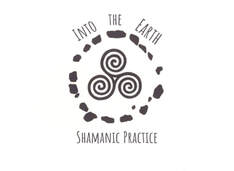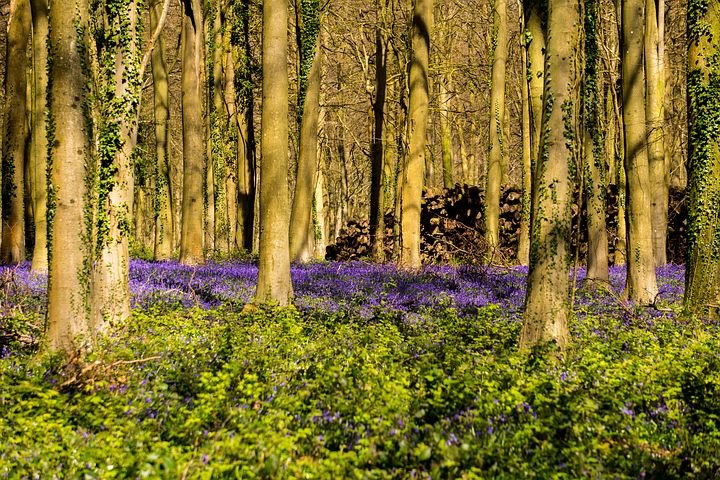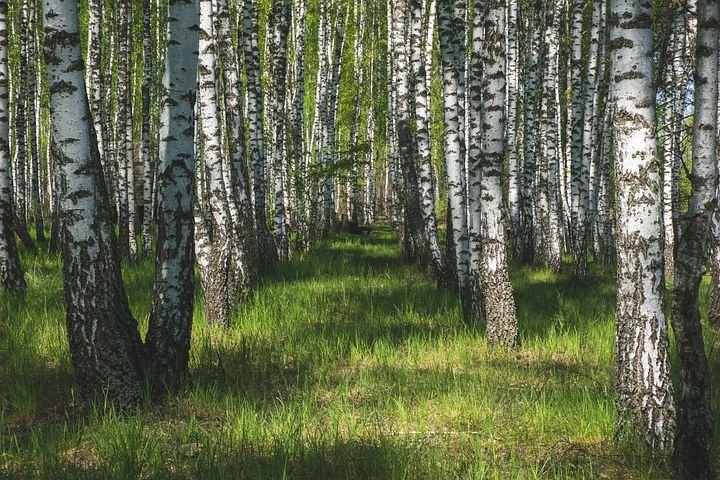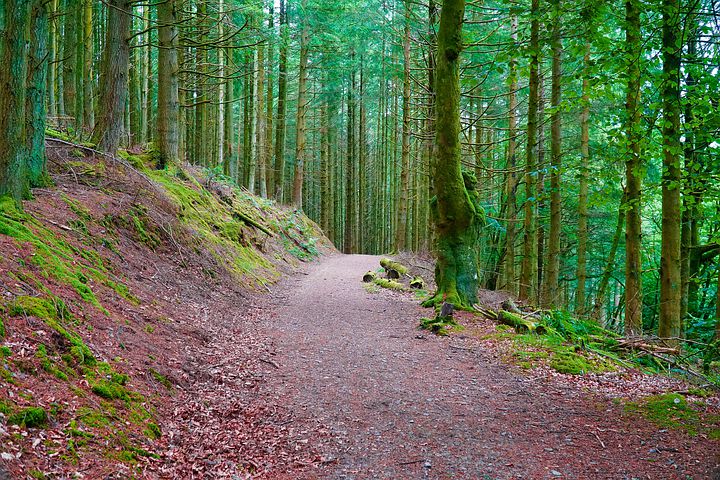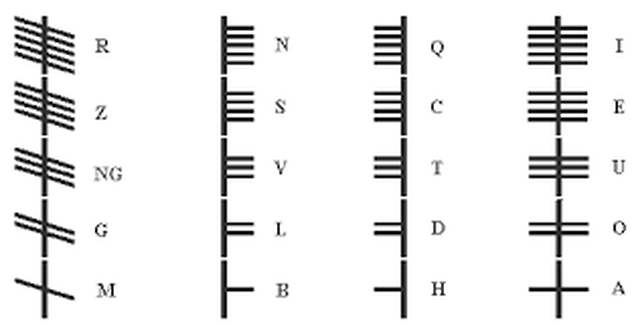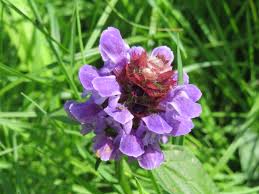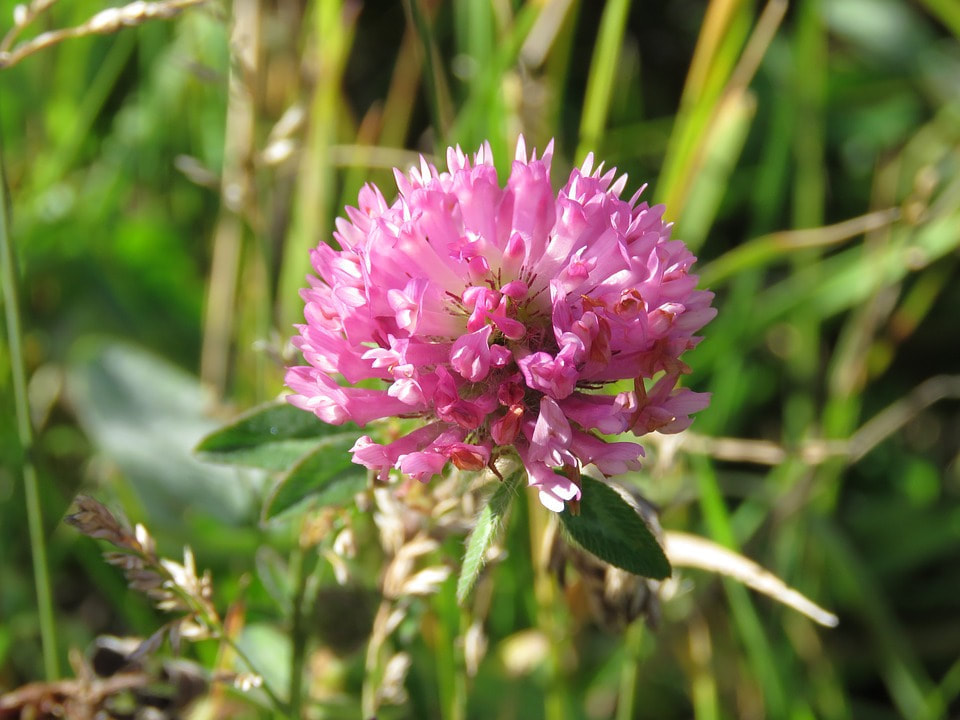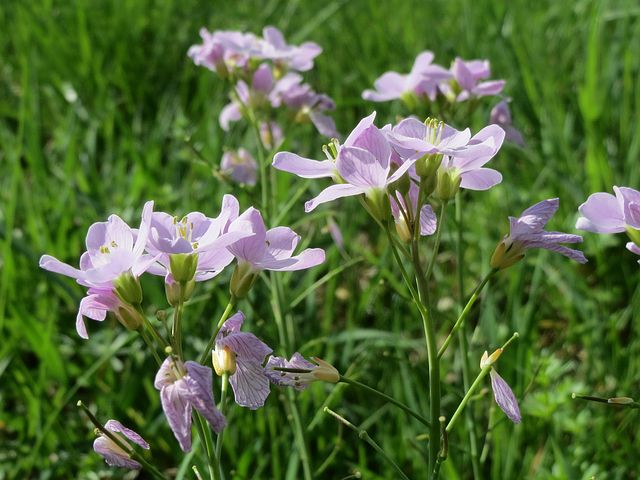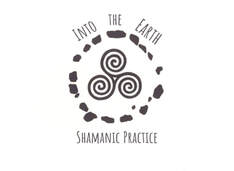Stage 6 – Exploring Woodland Knowledge
| wb_stage_6_.pdf | |
| File Size: | 414 kb |
| File Type: | |
Throughout history people have fled to the wilderness to recover from the terrors of war, this has been explored in Mythology in the stories of Merlin especially in the Vita Merlini by Geoffrey of Monmouth who shares some exceptional prose of Merlin fleeing to the Caledonian woods after the battle of Arfderydd.
‘I prefer the groves and broad Oak of Calidon, and the lofty mountains with green pasture at their feet. My Caledonian Forest rich in nuts, the forest that I prefer to everything.’
Vita Merlini, Geoffrey of Monmouth
This story has a parallel in Irish Mythology in Suibne Geilt as he fled from a battle also to become a man of the woods, both of these characters meet others who have done the same. Merlin meets a mad man also living in the wilds and Suibne meets the hag of the mill, a woman who competes with him to see who can jump farthest through the trees. I have shared his poetry before but due to its incredible potency for Tree lore here it is once again:
Thou oak, bushy, leafy,
thou art high beyond trees;
O hazlet, little branching one,
O fragrance of hazel-nuts.
O alder, thou art not hostile,
delightful is thy hue,
thou art not rending and prickling
in the gap wherein thou art.
O little blackthorn, little thorny one;
O little black sloe-tree;
O watercress, little green-topped one,
from the brink of the spring.
O apple-tree, little apple-tree,
much art thou shaken;
O quicken, little berried one,
delightful is thy bloom.
O briar, little arched one,
thou grantest no fair terms,
thou ceasest not to tear me,
till thou hast thy fill of blood.
O yew-tree, little yew-tree,
in churchyards thou art conspicuous;
O ivy, little ivy,
thou art familiar in the dusky wood.
O holly, little sheltering one,
thou door against the wind;
O ash-tree, thou baleful one,
hand-weapon of a warrior.
O birch, smooth and blessed,
thou melodious, proud one,
delightful each entwining branch
in the top of thy crown.
The aspen a-trembling;
by turns I hear
its leaves a-racing--
me seems 'tis the foray!
My aversion in woods--
I conceal it not from anyone--
is the leafy stirk of an oak
swaying evermore.
The last woodland character who escaped to the woods I would like to introduce to you is called Derg Corra from Irish literature. Once a servant of Fionn, he was forced into exile by a faerie woman and as a result he lived in a tree eating nuts and apples accompanied by stag, blackbird and trout which are the animals of land, air and water indicative once more of the guardians of knowledge through the oldest animals. He is part of the Fenian cycle which takes us into the gentle beauty of spring woods and just like the examples above reminds us of the healing aspects of trees.
The Celtic Poet
Let us now enter the gentle murmur of lost landscapes, places of rolling hills, cascading waterfalls, red berried thorn and the mountain ash, the early summer woodland which welcomes, nurtures and replenishes our souls.
The landscape that makes us sing with poetry as we move into the Forests of Sleive Bloom and once more take the pilgrim’s path under Brighid's mantle this time in the stories of the Fenian cycle which keep us for now in the familiar territory of Leinster until we are ready to head into wilder countryside.
As with many Celtic stories we will first start with the aged wisdom of the older woman.
Our story starts in an old wood, in an old roundhouse made of wood and straw. An aged wise woman called Bodhmall stirs her cauldron of knowledge for she is aware that there is a plague on the land, a disease which is inflicting all the people as well as the landscape.
The demon Ailleen has come up from the underworld breathing fire, causing torment and luring people to sleep with his magical harp.
Bodhmall knows that when the land is plagued it means its leaders have lost touch and that they no longer are working in harmony with the land but she also knows the age-old cure – a hero must be born with a pure heart raised by the power of strong women.
She gathers the spring herbs to her cauldron and adds them one at a time knowing it is not their medicinal qualities she seeks but their qualities and all that they contain to bring harmony to the world.
To the cauldron she adds:
Medicine of Selfheal, generosity of Clover, trumiph of Nettle, tenderness of Avens, nurturing of Strawberry, connection of Dandelion, replenishment of Plantain, tenacity of Yarrow, stability of Celandine, wisdom of Vervain, fearlessness of Burdock, energy of Agrimony, nobility of Meadowsweet, vitality of Ramsons, perseverance of Willowherb, soothing of Ground ivy, movement of Cleavers, gentleness of Chickweed, protection of Teasel and beauty of Scabious.
As she stirs the cauldron, she has a vision of the birth of a young man who will invite the caress of spring back to the land and the Green wood itself will celebrate his coming:
When the green woods laugh with the voice of joy,
And the dimpling stream runs laughing by;
When the air does laugh with our merry wit,
And the green hill laughs with the noise of it;
When the meadows laugh with lively green,
And the grasshopper laughs in the merry scene;
When Mary and Susan and Emily
With their sweet round mouths sing 'Ha ha he!'
When the painted birds laugh in the shade,
Where our table with cherries and nuts is spread:
Come live, and be merry, and join with me,
To sing the sweet chorus of 'Ha ha he!'
Laughing song by William Blake
When the baby is born they call him Demne and he is a delight to all who see him. His mother Muirne of the white neck tends and nurtures him whilst Bodhmall and the Grey one of Luchair protect and help develop his soul as spiritual foster mothers.
Demne’s father Cuaill was killed in the great battle of Cnuchna which is the modern day Castleknock near Dublin. He was the leader of the clan of Brascna and was fighting against the clan of Morna who were corrupt and sought power. Cuaill is killed and the remaining warriors that survived the battle, retreat into the wilds of Connaught while Muirne, Bodhmall and the Grey one of Liachair move to the woods of Sleive Bloom to bring up Demne. The clan of Morna wish to kill Demna for he is the heir to the clan of Brascna and they do not want them to rise once more.
Fionn just like Boann and Brighid ends up at a well to complete his destiny.
Fionn formerly known as Demne sits on the banks of the river Boyne, he has eaten of the salmon of Fec at Nectan’s well and can feel the power of the goddess Boann the deity of the river pulsing through his veins. All he has to do is put his thumb in his mouth and the Glefiosa, the bright knowledge is channeled through him.
He is now a file, a master poet who is familiar with the disciplines of Teinm Laida, Imbas forosna and Dichetal do cannail meaning his training is complete. These three disciplines demonstrate the key roles of a master poet in Celtic society.
Teinm Laida is discovering knowledge through the power of verse which we have been doing with the invocations we have used before meditating.
Imbas forosna is when the poet makes an offering and asks a question and then sleeps or goes into a trance to discover the answer, this again is similar to our opening meditations where we make an offering to the spirits then travel within to find the answers, it may well be what Shamanic Practitioners call ‘journeying’.
The last discipline known as Dichetal do cannail is translated as seeing with the ends of your fingers. This is when the poet uses touch to obtain knowledge. The last discipline we have used when collecting a stone or item from nature and meditated with it to receive impressions. These are examples of spiritual instruction in Celtic texts and point to the spiritual practices once employed. Tradition enables us to continue this ancestral wisdom in our own practices.
The Divine youth.
The divine youth is a theme we touched on in stage 3 in the form of Angus Óg and now it returns to us in the character of Fionn MacCuaill who was the baby Demne. Changing your name when you reach a certain age and have been initiated into adulthood is a normal procedure in Celtic custom and throughout the world. The name normally reflects a quality you possess and in this case the name Fionn simply means ‘fair one’ and refers to his fair complexion and hair.
The divine youth bypasses all the years of arduous training to arrive at powerful gifts. This happens in the story of Merlin when he prophecies the future of the kingdom at a very young age. In Welsh lore the oldest motif seems to be Modron and Mabon which simply means mother and son and as already discussed the youthful God as Angus Óg. This youthfulness seems to point to an innocence and embodiment of soul which occurs as an intuitive response early in life to an event or initiation. It might be the older person sometimes loses that deep connection to their primal soul as they get caught up in a human existence.
In the end Fionn against all odds overcomes the demon Ailleen and reinstates the clan of Brascna but not without help. He wins the favour of Crimnall who had retreated into the woods of Connaught after the battle of Cnucha and together with the lost warriors of the clan of Brascna they arrive at Tara to put things right.
Fionn is further helped by Fiacha who gives him a magical spear which is used to overcome the enchantment of Ailleen. The Fenian cycle is imbued with much romance and magic and informs us of how the divine youth is instructed by both powerful and wise women and men in order to fulfill their potential.
Fionn is raised by Bodhmall, Luchair and Muirne giving him key female roles who we will explore further in the meditation but then is guided by Crimnall, his father’s most courageous warrior who in turn sends him to Finnegas, the old man at the well who instructs him to become a poet and finally Fiacha an aged warrior who was the guardian of a magical spear. He therefore has been raised and trained by a balance of male and female role models and the whole story demonstrates how we only overcome the demons of the land and our society by honouring the key roles of all genders and ages.
Meditation 6 - Gentleness of Birch
As with all the meditations, use as many invocations from this course as you wish to, or create/source your own to create a meditation space, you may find you want to keep it simple and go straight into the meditation.
Connect with a well as your entry point and tune into a guide or guides such as an ancestor or animal. Allow yourself to follow the well down to your soul shrine which I have based on Brugh na Boinne (Newgrange). I have been using the mythology of a Celtic Ireland to explore the inner worlds but please feel free to adapt and inhabit them as your own.
As discussed, you may find the meditation has more potency if you use a well or soul shrine you know in the physical. In this meditation we head out from our soul shrine out into the spring woods of Sleive Bloom filled with a young heart and hope for the year ahead.
Visualise a light airy wood, a spring/summer wood filled with beautiful flowers that is open and inviting. It may have streams, springs or even waterfalls. Remember you can still connect with the feeling of summer in the depths of winter. Get a sense of the centre of the wood where you will find a birch tree. As you approach the tree notice its silvery bark and light green triangular leaves. Take in any scents and tune in to how the ground and the air feel around you.
Sit for a while with the Birch absorbing a gentle stillness. Nature can be tentative yet tenacious, gentle yet strong, many delights unfold which slowly break the cold spell of winter as well as bringing it on. Meditate on the vital qualities of gentleness and kindness, nurture and sweetness. Feel the embrace of the soft aspects of Mother Nature.
-meditate-
Only when you are ready, observe, tune in or just know they are there, the delicate yet hardy flowers of the forest. Smell their scents, touch their leaves or just absorb their qualities.
Is there an especial plant you are drawn to? Can you let go to their gentle healing?
Allow yourself to relax in this beautiful safe place and know you can return anytime and build on its nurturing imagery.
Women of the Cauldron
Provided you have a connection with an animal or ancestral guide I offer this extension to the meditation as a healing. Once the scene above becomes familiar and you can feel your guide(s) with you leave the birch grove and enter the roundhouse of Bodhmall who is accompanied by Muirne and the Grey one of Liachair.
There are herbs hanging from the rafters and a large cauldron simmering in its centre. The three women add many herbs to the cauldron just like in the story and as they do so you feel more complete and healed:
Wild women of the woods knit my soul together,
Wild women of the woods make me whole.
Bodhmall, Luchair, Muirne,
Weave my soul together.
Bodhmall, Luchair, Muirne,
Make me whole.
Gather all the forest herbs and wisdom of the trees,
May nature bind me as one and make me complete.
Gather all my soul parts in the cauldron of regeneration,
Healing power of plants, strength of women.
You settle in the roundhouse making sure your guide is close. You feel Bodhmall calling to all the parts of you that are lost and scattered. The cauldron acts as a big net bringing them altogether. Breathe in all these lost parts. If you have any images or impressions that come to you accept them and send healing as they re-integrate into your body. Breathe slowly and deeply welcoming home any lost parts. Sit and be with this process for however long you need to. When you are ready begin to return feeling the support of your guide. Be gentle with yourself and know you are more complete.
Bodhmall in this meditation is acting as a healer of your soul bringing back any parts of which are lost. In stage 1 we discussed how parts of our soul can leave especially through painful experiences. We discussed that by studying story with awareness and connecting to an imaginary friend those parts can start to be re-integrated back into you. This meditation is allowing you to consciously welcoming them back.
‘I prefer the groves and broad Oak of Calidon, and the lofty mountains with green pasture at their feet. My Caledonian Forest rich in nuts, the forest that I prefer to everything.’
Vita Merlini, Geoffrey of Monmouth
This story has a parallel in Irish Mythology in Suibne Geilt as he fled from a battle also to become a man of the woods, both of these characters meet others who have done the same. Merlin meets a mad man also living in the wilds and Suibne meets the hag of the mill, a woman who competes with him to see who can jump farthest through the trees. I have shared his poetry before but due to its incredible potency for Tree lore here it is once again:
Thou oak, bushy, leafy,
thou art high beyond trees;
O hazlet, little branching one,
O fragrance of hazel-nuts.
O alder, thou art not hostile,
delightful is thy hue,
thou art not rending and prickling
in the gap wherein thou art.
O little blackthorn, little thorny one;
O little black sloe-tree;
O watercress, little green-topped one,
from the brink of the spring.
O apple-tree, little apple-tree,
much art thou shaken;
O quicken, little berried one,
delightful is thy bloom.
O briar, little arched one,
thou grantest no fair terms,
thou ceasest not to tear me,
till thou hast thy fill of blood.
O yew-tree, little yew-tree,
in churchyards thou art conspicuous;
O ivy, little ivy,
thou art familiar in the dusky wood.
O holly, little sheltering one,
thou door against the wind;
O ash-tree, thou baleful one,
hand-weapon of a warrior.
O birch, smooth and blessed,
thou melodious, proud one,
delightful each entwining branch
in the top of thy crown.
The aspen a-trembling;
by turns I hear
its leaves a-racing--
me seems 'tis the foray!
My aversion in woods--
I conceal it not from anyone--
is the leafy stirk of an oak
swaying evermore.
The last woodland character who escaped to the woods I would like to introduce to you is called Derg Corra from Irish literature. Once a servant of Fionn, he was forced into exile by a faerie woman and as a result he lived in a tree eating nuts and apples accompanied by stag, blackbird and trout which are the animals of land, air and water indicative once more of the guardians of knowledge through the oldest animals. He is part of the Fenian cycle which takes us into the gentle beauty of spring woods and just like the examples above reminds us of the healing aspects of trees.
The Celtic Poet
Let us now enter the gentle murmur of lost landscapes, places of rolling hills, cascading waterfalls, red berried thorn and the mountain ash, the early summer woodland which welcomes, nurtures and replenishes our souls.
The landscape that makes us sing with poetry as we move into the Forests of Sleive Bloom and once more take the pilgrim’s path under Brighid's mantle this time in the stories of the Fenian cycle which keep us for now in the familiar territory of Leinster until we are ready to head into wilder countryside.
As with many Celtic stories we will first start with the aged wisdom of the older woman.
Our story starts in an old wood, in an old roundhouse made of wood and straw. An aged wise woman called Bodhmall stirs her cauldron of knowledge for she is aware that there is a plague on the land, a disease which is inflicting all the people as well as the landscape.
The demon Ailleen has come up from the underworld breathing fire, causing torment and luring people to sleep with his magical harp.
Bodhmall knows that when the land is plagued it means its leaders have lost touch and that they no longer are working in harmony with the land but she also knows the age-old cure – a hero must be born with a pure heart raised by the power of strong women.
She gathers the spring herbs to her cauldron and adds them one at a time knowing it is not their medicinal qualities she seeks but their qualities and all that they contain to bring harmony to the world.
To the cauldron she adds:
Medicine of Selfheal, generosity of Clover, trumiph of Nettle, tenderness of Avens, nurturing of Strawberry, connection of Dandelion, replenishment of Plantain, tenacity of Yarrow, stability of Celandine, wisdom of Vervain, fearlessness of Burdock, energy of Agrimony, nobility of Meadowsweet, vitality of Ramsons, perseverance of Willowherb, soothing of Ground ivy, movement of Cleavers, gentleness of Chickweed, protection of Teasel and beauty of Scabious.
As she stirs the cauldron, she has a vision of the birth of a young man who will invite the caress of spring back to the land and the Green wood itself will celebrate his coming:
When the green woods laugh with the voice of joy,
And the dimpling stream runs laughing by;
When the air does laugh with our merry wit,
And the green hill laughs with the noise of it;
When the meadows laugh with lively green,
And the grasshopper laughs in the merry scene;
When Mary and Susan and Emily
With their sweet round mouths sing 'Ha ha he!'
When the painted birds laugh in the shade,
Where our table with cherries and nuts is spread:
Come live, and be merry, and join with me,
To sing the sweet chorus of 'Ha ha he!'
Laughing song by William Blake
When the baby is born they call him Demne and he is a delight to all who see him. His mother Muirne of the white neck tends and nurtures him whilst Bodhmall and the Grey one of Luchair protect and help develop his soul as spiritual foster mothers.
Demne’s father Cuaill was killed in the great battle of Cnuchna which is the modern day Castleknock near Dublin. He was the leader of the clan of Brascna and was fighting against the clan of Morna who were corrupt and sought power. Cuaill is killed and the remaining warriors that survived the battle, retreat into the wilds of Connaught while Muirne, Bodhmall and the Grey one of Liachair move to the woods of Sleive Bloom to bring up Demne. The clan of Morna wish to kill Demna for he is the heir to the clan of Brascna and they do not want them to rise once more.
Fionn just like Boann and Brighid ends up at a well to complete his destiny.
Fionn formerly known as Demne sits on the banks of the river Boyne, he has eaten of the salmon of Fec at Nectan’s well and can feel the power of the goddess Boann the deity of the river pulsing through his veins. All he has to do is put his thumb in his mouth and the Glefiosa, the bright knowledge is channeled through him.
He is now a file, a master poet who is familiar with the disciplines of Teinm Laida, Imbas forosna and Dichetal do cannail meaning his training is complete. These three disciplines demonstrate the key roles of a master poet in Celtic society.
Teinm Laida is discovering knowledge through the power of verse which we have been doing with the invocations we have used before meditating.
Imbas forosna is when the poet makes an offering and asks a question and then sleeps or goes into a trance to discover the answer, this again is similar to our opening meditations where we make an offering to the spirits then travel within to find the answers, it may well be what Shamanic Practitioners call ‘journeying’.
The last discipline known as Dichetal do cannail is translated as seeing with the ends of your fingers. This is when the poet uses touch to obtain knowledge. The last discipline we have used when collecting a stone or item from nature and meditated with it to receive impressions. These are examples of spiritual instruction in Celtic texts and point to the spiritual practices once employed. Tradition enables us to continue this ancestral wisdom in our own practices.
The Divine youth.
The divine youth is a theme we touched on in stage 3 in the form of Angus Óg and now it returns to us in the character of Fionn MacCuaill who was the baby Demne. Changing your name when you reach a certain age and have been initiated into adulthood is a normal procedure in Celtic custom and throughout the world. The name normally reflects a quality you possess and in this case the name Fionn simply means ‘fair one’ and refers to his fair complexion and hair.
The divine youth bypasses all the years of arduous training to arrive at powerful gifts. This happens in the story of Merlin when he prophecies the future of the kingdom at a very young age. In Welsh lore the oldest motif seems to be Modron and Mabon which simply means mother and son and as already discussed the youthful God as Angus Óg. This youthfulness seems to point to an innocence and embodiment of soul which occurs as an intuitive response early in life to an event or initiation. It might be the older person sometimes loses that deep connection to their primal soul as they get caught up in a human existence.
In the end Fionn against all odds overcomes the demon Ailleen and reinstates the clan of Brascna but not without help. He wins the favour of Crimnall who had retreated into the woods of Connaught after the battle of Cnucha and together with the lost warriors of the clan of Brascna they arrive at Tara to put things right.
Fionn is further helped by Fiacha who gives him a magical spear which is used to overcome the enchantment of Ailleen. The Fenian cycle is imbued with much romance and magic and informs us of how the divine youth is instructed by both powerful and wise women and men in order to fulfill their potential.
Fionn is raised by Bodhmall, Luchair and Muirne giving him key female roles who we will explore further in the meditation but then is guided by Crimnall, his father’s most courageous warrior who in turn sends him to Finnegas, the old man at the well who instructs him to become a poet and finally Fiacha an aged warrior who was the guardian of a magical spear. He therefore has been raised and trained by a balance of male and female role models and the whole story demonstrates how we only overcome the demons of the land and our society by honouring the key roles of all genders and ages.
Meditation 6 - Gentleness of Birch
As with all the meditations, use as many invocations from this course as you wish to, or create/source your own to create a meditation space, you may find you want to keep it simple and go straight into the meditation.
Connect with a well as your entry point and tune into a guide or guides such as an ancestor or animal. Allow yourself to follow the well down to your soul shrine which I have based on Brugh na Boinne (Newgrange). I have been using the mythology of a Celtic Ireland to explore the inner worlds but please feel free to adapt and inhabit them as your own.
As discussed, you may find the meditation has more potency if you use a well or soul shrine you know in the physical. In this meditation we head out from our soul shrine out into the spring woods of Sleive Bloom filled with a young heart and hope for the year ahead.
Visualise a light airy wood, a spring/summer wood filled with beautiful flowers that is open and inviting. It may have streams, springs or even waterfalls. Remember you can still connect with the feeling of summer in the depths of winter. Get a sense of the centre of the wood where you will find a birch tree. As you approach the tree notice its silvery bark and light green triangular leaves. Take in any scents and tune in to how the ground and the air feel around you.
Sit for a while with the Birch absorbing a gentle stillness. Nature can be tentative yet tenacious, gentle yet strong, many delights unfold which slowly break the cold spell of winter as well as bringing it on. Meditate on the vital qualities of gentleness and kindness, nurture and sweetness. Feel the embrace of the soft aspects of Mother Nature.
-meditate-
Only when you are ready, observe, tune in or just know they are there, the delicate yet hardy flowers of the forest. Smell their scents, touch their leaves or just absorb their qualities.
Is there an especial plant you are drawn to? Can you let go to their gentle healing?
Allow yourself to relax in this beautiful safe place and know you can return anytime and build on its nurturing imagery.
Women of the Cauldron
Provided you have a connection with an animal or ancestral guide I offer this extension to the meditation as a healing. Once the scene above becomes familiar and you can feel your guide(s) with you leave the birch grove and enter the roundhouse of Bodhmall who is accompanied by Muirne and the Grey one of Liachair.
There are herbs hanging from the rafters and a large cauldron simmering in its centre. The three women add many herbs to the cauldron just like in the story and as they do so you feel more complete and healed:
Wild women of the woods knit my soul together,
Wild women of the woods make me whole.
Bodhmall, Luchair, Muirne,
Weave my soul together.
Bodhmall, Luchair, Muirne,
Make me whole.
Gather all the forest herbs and wisdom of the trees,
May nature bind me as one and make me complete.
Gather all my soul parts in the cauldron of regeneration,
Healing power of plants, strength of women.
You settle in the roundhouse making sure your guide is close. You feel Bodhmall calling to all the parts of you that are lost and scattered. The cauldron acts as a big net bringing them altogether. Breathe in all these lost parts. If you have any images or impressions that come to you accept them and send healing as they re-integrate into your body. Breathe slowly and deeply welcoming home any lost parts. Sit and be with this process for however long you need to. When you are ready begin to return feeling the support of your guide. Be gentle with yourself and know you are more complete.
Bodhmall in this meditation is acting as a healer of your soul bringing back any parts of which are lost. In stage 1 we discussed how parts of our soul can leave especially through painful experiences. We discussed that by studying story with awareness and connecting to an imaginary friend those parts can start to be re-integrated back into you. This meditation is allowing you to consciously welcoming them back.
Woodland Knowledge
Sometimes woodland knowledge is conveyed in more gentle ways and through beings who are small in nature such as Iubdhan the King of the Leprechauns who is proud and powerful and whose shoes are white bronze and enable him to travel over land and sea and just like the sea God Mannannan mac Lir who also has bronze shoes and traverses land and sea.
Iubdhan informs Ferdiad the King’s fire servant what to burn, again a passage filled with woodland folk lore claiming the woodbine is the king of the woods and should not be burnt. Often lore can be connected to a practical reason and woodbine or honeysuckle is better used for strong cordage rather than for fires.
His knowledge continues to explore the qualities of many trees and is one of many discourses on tree knowledge which runs through many Celtic tales but the most noted is the tree alphabet known as the Celtic Tree Ogham.
The Tree Alphabet
There is an ancient tree alphabet known as the Celtic tree Ogham. Although it is quite an obscure and difficult piece of lore to understand it seems the trees and indeed shrubs that are part of it are the most known in rural folklore.
It consists of twenty letters which are B L F S N H D T C Q M G NG ST R A O UE I. The diagram below illustrates how the letters are written. They are a series of lines to enable them to be easily carved on stone. The stones we find carved with these letters are dated between the fifth and seventh centuries, mainly in Ireland and seem to be the names of the people that own the land to avoid any disputes of land ownership.
Sometimes woodland knowledge is conveyed in more gentle ways and through beings who are small in nature such as Iubdhan the King of the Leprechauns who is proud and powerful and whose shoes are white bronze and enable him to travel over land and sea and just like the sea God Mannannan mac Lir who also has bronze shoes and traverses land and sea.
Iubdhan informs Ferdiad the King’s fire servant what to burn, again a passage filled with woodland folk lore claiming the woodbine is the king of the woods and should not be burnt. Often lore can be connected to a practical reason and woodbine or honeysuckle is better used for strong cordage rather than for fires.
His knowledge continues to explore the qualities of many trees and is one of many discourses on tree knowledge which runs through many Celtic tales but the most noted is the tree alphabet known as the Celtic Tree Ogham.
The Tree Alphabet
There is an ancient tree alphabet known as the Celtic tree Ogham. Although it is quite an obscure and difficult piece of lore to understand it seems the trees and indeed shrubs that are part of it are the most known in rural folklore.
It consists of twenty letters which are B L F S N H D T C Q M G NG ST R A O UE I. The diagram below illustrates how the letters are written. They are a series of lines to enable them to be easily carved on stone. The stones we find carved with these letters are dated between the fifth and seventh centuries, mainly in Ireland and seem to be the names of the people that own the land to avoid any disputes of land ownership.
However, in mythology we find a very different use as Druids wield it as a magical force which warriors and even King's fear. The system is mentioned in the old testament which is not unusual as much of the Irish lore is connected to the Bible and dated through the stories of the Bible which indicates how seriously the Christian monks took the old stories.
In the tower of Babel after the tower is destroyed it is said God punished the people for thinking they could build a tower to Heaven and as part of the punishment God distorted language so we could not understand each other. The scholar Fenius Farsaidh gathered the best of all the languages together and made up the Bobel Loth (the Ogham) which contained the best of all languages which is the forerunner of Goidelic which predates Gaelic.
The earlier Celtic stories attribute the invention of the language to Ogma Grainainech which means Oghma of the sun-like countenance who is the God of eloquence in the Celtic tales as well as a great warrior. It is said he speaks with honey on his tongue and can entice people with the power of his words. He carries a magical blade which can carve his words into stone. He is a champion, a highly skilled warrior who led and killed many of warriors in the first battle of Moytura. Again, we find references to the power of words and how they can be wielded for significant gains.
The main function of this alphabet as written in extant Irish manuscripts is as an aid of learning in the Bardic arts for each letter is associated with over 150 different aspects to which trees is just one of them. This intense learning can be likened to Brahmin priests in India who still learn their ancient scriptures by heart as the oral tradition has done for thousands of years. The expression says it all as the knowledge is then in your body and indeed your heart as a devotional practice.
The letters and tree associations are as follows:
B- Beithe- Birch, L- Luis-Rowan, F- Fearn- Alder, S- Sail- Willow, N- Nion- Ash, H-Huath- Hawthorn, D-Duir-Oak, T- Tinne- Holly, C- Coll- Hazel, Q-Quert-Apple, M-Muin-Vine, G-Gort-Ivy, NG- Ngetal- Broom, St- Straiph- Blackthorn, R- Ruis- Elder, A- Ailm- Pine, O-Onn- Furze, U- Ur- Heather, E- Eadhadh- Aspen, I- Idhadh- Yew.
Despite our mention of literature and paper the Ogham would have originally been part of an oral tradition and it is in living nature we must look to find true wisdom
EVERY DAY TRADITION.
This stage has continued to explore the woodlands started in the previous stage connecting with the gentleness of birch and the beauty of spring. Previously we explored how people may view the woodlands as places that harbour wild animals or scary beings but it is also important to recognise it as a place of healing.
There are many tales of people fleeing to the woods after a battle and in the tale of Fionn we shall hear of this happening again. When we are in nature, we can be ourselves, we do not need to feel judged and we are sheltered from the sometimes harsh human world.
Scientists now know that trees release many good chemicals that we can absorb into our bodies and of course the clean air and peaceful atmosphere is ideal for us to top up.
In this stage I invite you to soak up the spring/summer wood or if you read this in winter the more open and gentler aspects of the wood and notice the plants and invertebrates that share the space.
Our Nature connection course explores plants in much more depth but here it is suffice to say that looking at plants in more detail can open up a whole new world. Looking at the varieties of leaves, flowers and stems in a woodland is a rewarding process even if you do not know their names. It is also an opportunity to sit with a plant and just like in the story of Bodhmall imagine what personalities or qualities they have.
Accepting plants for simply being alive and present I feel is more important for a Nature Connection than knowing their uses and botanical names, though to do both is a wonderful way to celebrate woods.
Enter a woodland, make sketches or collect leaves and flowers of all the different plants. Sit and breathe in the healing air and meditate with chosen trees or plants or just sit awhile with them. Make the woodland you visit a lasting friend and feel the mutual benefits.
This simple act of being in nature will bring you healing, however you may also practice the meditation above as often as you wish and when you feel ready practice the extension of the meditation in the roundhouse. Here you can bring about nurture and healing allowing Bodhmall and the herbs to soothe your soul.
You are now half way through the course and in the second half we will go still deeper into the ancient tales which will teach us about the ecology and evolution of our precious planet.
There are many tales of people fleeing to the woods after a battle and in the tale of Fionn we shall hear of this happening again. When we are in nature, we can be ourselves, we do not need to feel judged and we are sheltered from the sometimes harsh human world.
Scientists now know that trees release many good chemicals that we can absorb into our bodies and of course the clean air and peaceful atmosphere is ideal for us to top up.
In this stage I invite you to soak up the spring/summer wood or if you read this in winter the more open and gentler aspects of the wood and notice the plants and invertebrates that share the space.
Our Nature connection course explores plants in much more depth but here it is suffice to say that looking at plants in more detail can open up a whole new world. Looking at the varieties of leaves, flowers and stems in a woodland is a rewarding process even if you do not know their names. It is also an opportunity to sit with a plant and just like in the story of Bodhmall imagine what personalities or qualities they have.
Accepting plants for simply being alive and present I feel is more important for a Nature Connection than knowing their uses and botanical names, though to do both is a wonderful way to celebrate woods.
Enter a woodland, make sketches or collect leaves and flowers of all the different plants. Sit and breathe in the healing air and meditate with chosen trees or plants or just sit awhile with them. Make the woodland you visit a lasting friend and feel the mutual benefits.
This simple act of being in nature will bring you healing, however you may also practice the meditation above as often as you wish and when you feel ready practice the extension of the meditation in the roundhouse. Here you can bring about nurture and healing allowing Bodhmall and the herbs to soothe your soul.
You are now half way through the course and in the second half we will go still deeper into the ancient tales which will teach us about the ecology and evolution of our precious planet.
